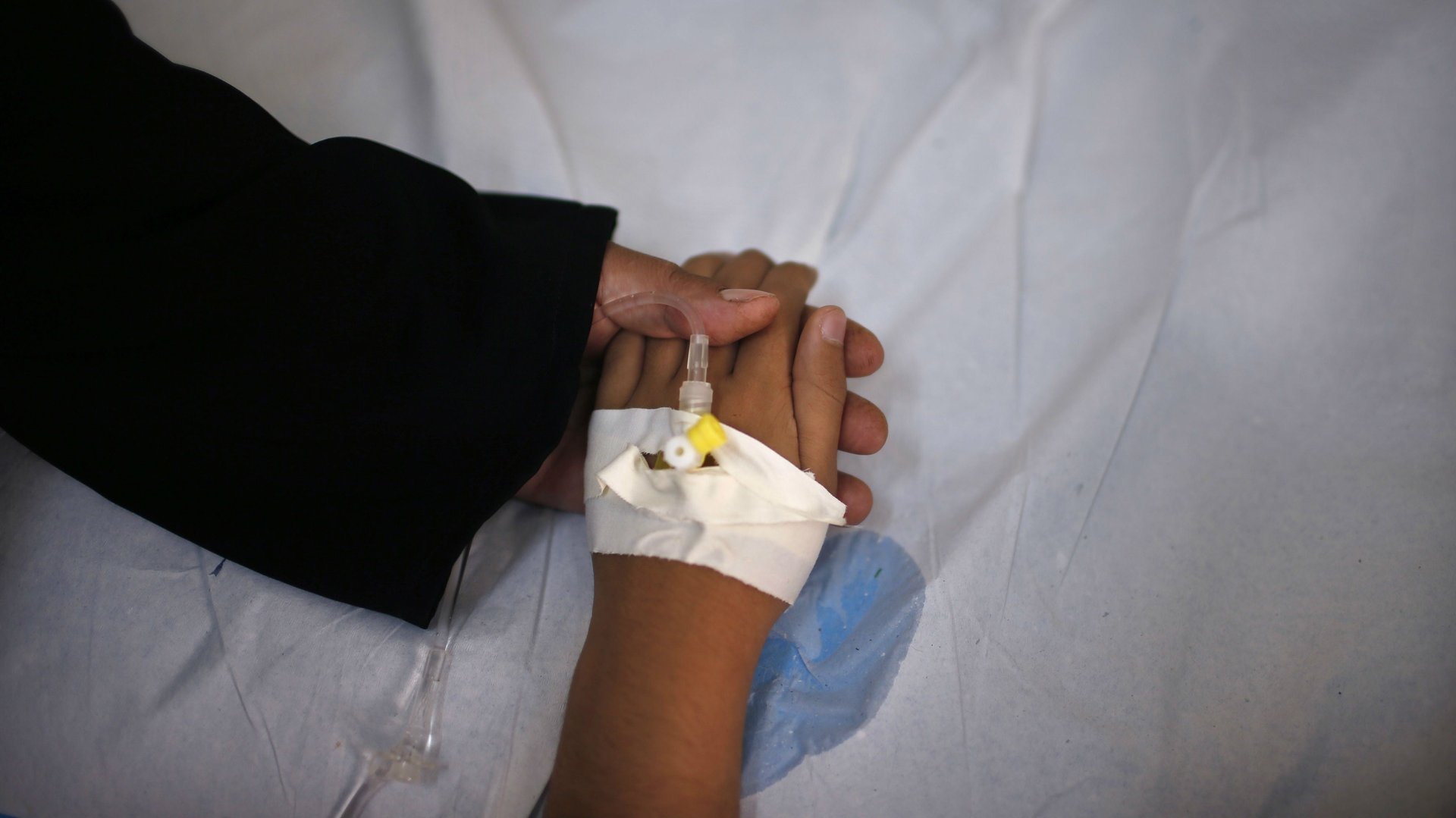Needleless blood draws could solve one of the biggest headaches in hospitals
Of all the aches and pains patients endure in a prolonged hospital stay, getting blood drawn is one of the biggest nuisances.


Of all the aches and pains patients endure in a prolonged hospital stay, getting blood drawn is one of the biggest nuisances.
Patients who are sick enough to stay in the hospital for days on end need to have their blood monitored regularly, and every time, it’s an invasive procedure. Although often patients are set up with central or peripheral lines that allow medication or saline to be pumped directly into veins in their arms or chest, these lines are actually fairly bad at taking blood in the other direction over long periods of time. As a result, patients end up getting pricked with needles constantly to have their blood taken—including in the wee hours of the night.
San Francisco, California-based Velano Vascular is trying to change that with a single-use tool it’s developed that can draw blood more efficiently from patients’ existing intravenous device. The company has been developing their device, called PIVO (a play on ‘peripheral intravenous catheter,’ a name for some types of IV lines), since 2012; this February, the US Food and Drug Administration approved the device for use in hospitals. Several hospital systems across the US, including Intermountain Healthcare in Salt Lake City and Brigham and Women’s Hospital in Boston, have already adopted PIVO for long-term patients.
Catheters that are permanently inserted into patients’ veins are usually made of plastic that softens as the body warms them. These are more comfortable than metal needles, which were previously used and generally considered highly irritating. But the downside is that this plastic becomes floppy over time. “[It] becomes a noodle,” says Eric Stone, the CEO and co-founder of Velano.
Floppy noodles have a hard time sucking blood out. Stone explained that when the part of the tube in the body becomes softer, it actually closes in on itself when nurses or phlebotomists pull blood back in the other direction. Additionally, without blood thinners (which may not be an option for all patients), platelets start to form clots around the opening of the IV.
Both of these factors can cause cause “turbulence,” which is a fluid-dynamic problem that basically causes blood cells to burst. Sometimes, this just means that the blood isn’t testable and needs to be redrawn, but other times the cells look ruptured in a way that is indicative of hyperkalemia, or too much potassium in the blood, which can cause fatally irregular heartbeats. Either way, the blood needs to be redrawn with a separate needle.
PIVO is a single-use device that acts as a tube-within-a-tube to solve this problem. Doctors and nurses insert the PIVO tube into catheter, which stiffens up for just a second to take out blood and avoid the flimsy-end problem. After about two minutes, the PIVO is removed, thrown out, and whatever fluids were being pumped in before can be restarted The patient wouldn’t even have to wake up, theoretically.
And on the healthcare side, because there’s no needle to remove there’s no risk of being stuck with a needle containing a blood-borne pathogen. The US Centers for Disease Control estimates that roughly 385,000 people will get stuck with a needle containing someone else’s blood. Although the chance of contracting something like HIV from a needle prick is less than three in 1,000 by some estimates, it still happens. Karen Daley, a nurse on the advisory board of Velano Vascular, was infected with both HIV and Hep-C from a needlestick from a patient.
Stone would not give specifics about the cost of PIVO, but he did say that it costs about as much as needles—especially when accounting for patient comfort. The trouble is, even with praise from the FDA and with a few hospitals jumping on board as early adopters, it’ll be difficult for PIVO to penetrate a market that is resistant to change. Even though electronic health records were available in the 1960s, it wasn’t until last year that most US hospitals used them (and even then, 4% didn’t). Blood has been taken from some form of needle since the mid-1800s.
Correction: This article has been updated to reflect the types of intravenous systems hospitalized patients may receive, and the year in which Velano Vascular began developing PIVO.